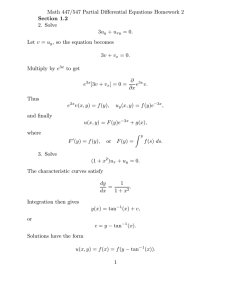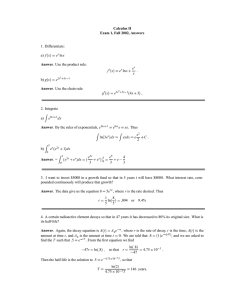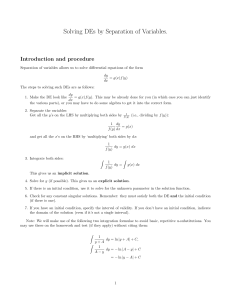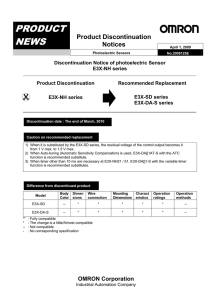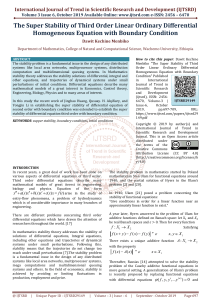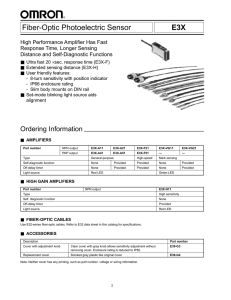2e Werkcollege SdM: Atoms and Molecules: 2009
advertisement
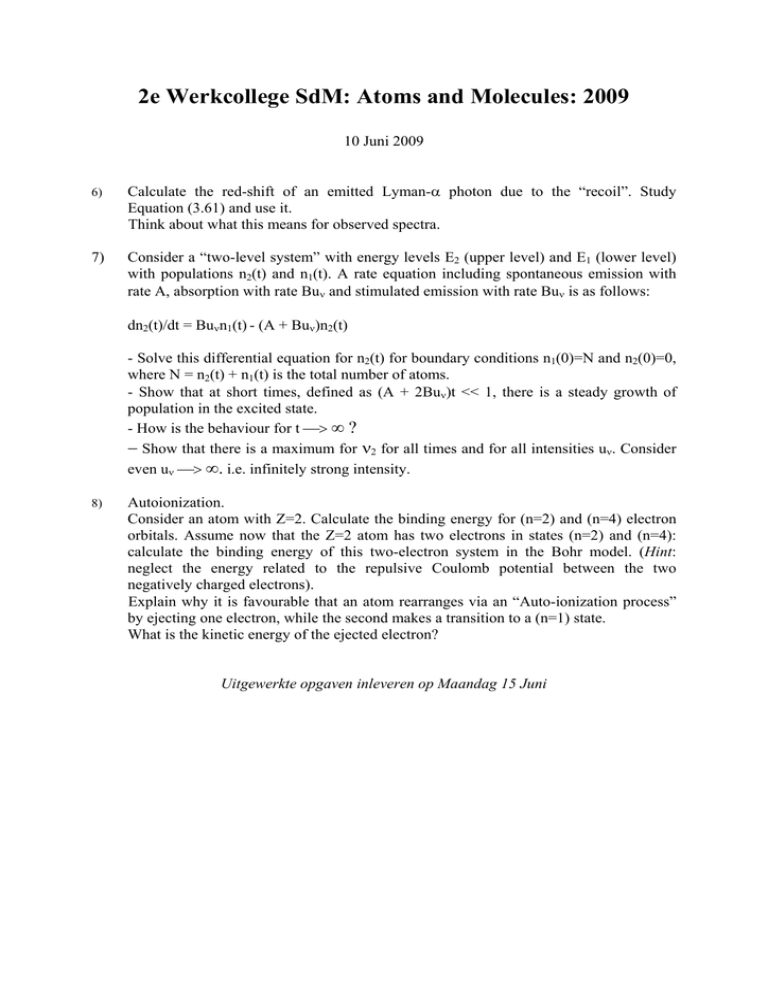
2e Werkcollege SdM: Atoms and Molecules: 2009 10 Juni 2009 6) Calculate the red-shift of an emitted Lyman-α photon due to the “recoil”. Study Equation (3.61) and use it. Think about what this means for observed spectra. 7) Consider a “two-level system” with energy levels E2 (upper level) and E1 (lower level) with populations n2(t) and n1(t). A rate equation including spontaneous emission with rate A, absorption with rate Buν and stimulated emission with rate Buν is as follows: dn2(t)/dt = Buνn1(t) - (A + Buν)n2(t) - Solve this differential equation for n2(t) for boundary conditions n1(0)=N and n2(0)=0, where N = n2(t) + n1(t) is the total number of atoms. - Show that at short times, defined as (A + 2Buν)t << 1, there is a steady growth of population in the excited state. - How is the behaviour for t ⎯> ∞ ? − Show that there is a maximum for ν2 for all times and for all intensities uν. Consider even uν ⎯> ∞. i.e. infinitely strong intensity. 8) Autoionization. Consider an atom with Z=2. Calculate the binding energy for (n=2) and (n=4) electron orbitals. Assume now that the Z=2 atom has two electrons in states (n=2) and (n=4): calculate the binding energy of this two-electron system in the Bohr model. (Hint: neglect the energy related to the repulsive Coulomb potential between the two negatively charged electrons). Explain why it is favourable that an atom rearranges via an “Auto-ionization process” by ejecting one electron, while the second makes a transition to a (n=1) state. What is the kinetic energy of the ejected electron? Uitgewerkte opgaven inleveren op Maandag 15 Juni
